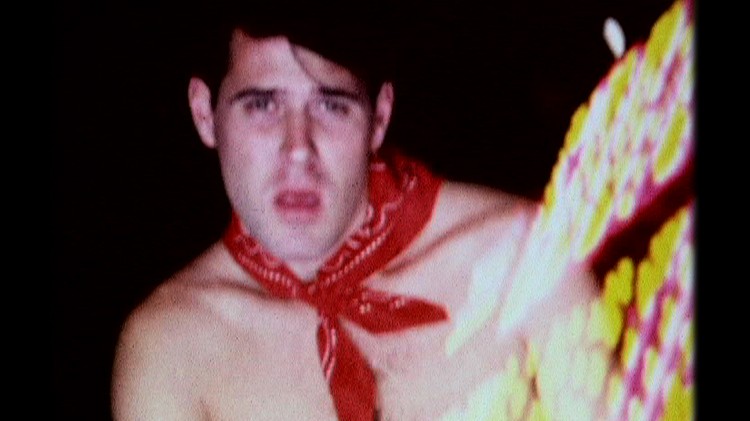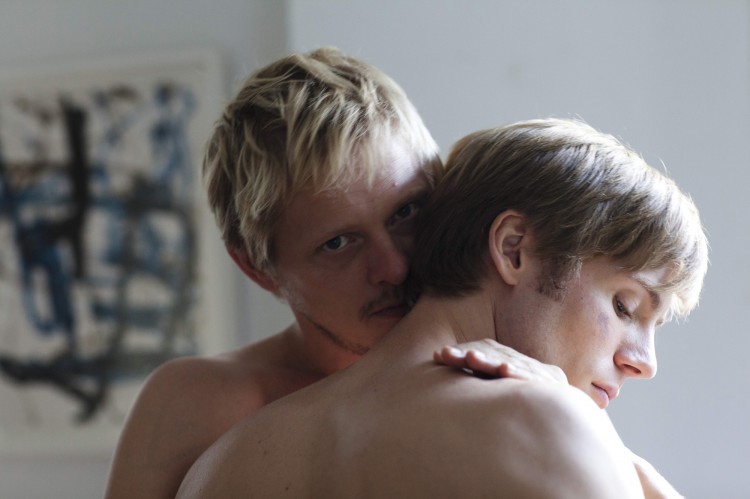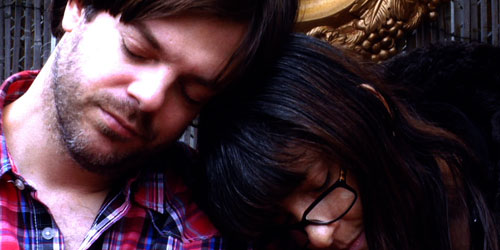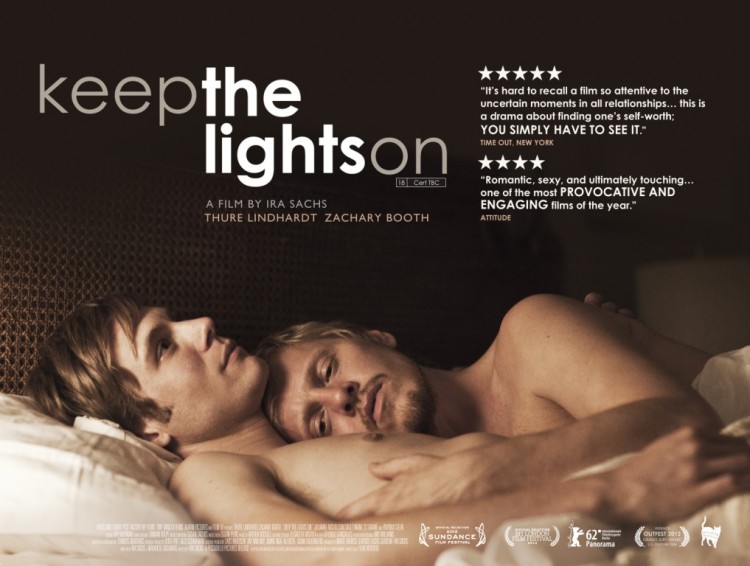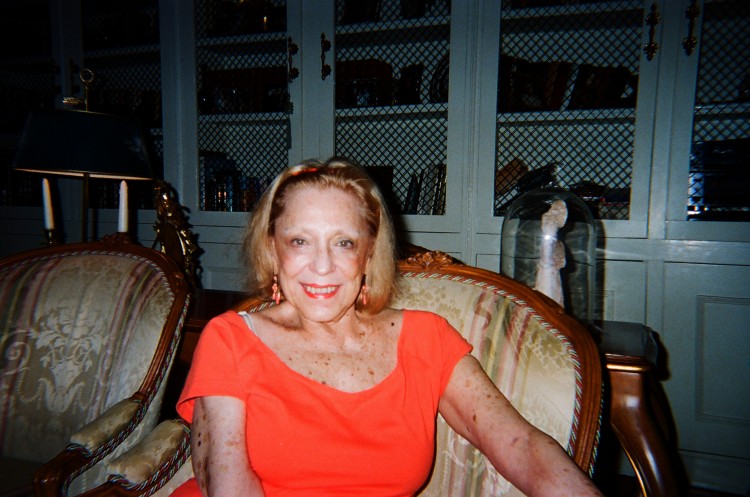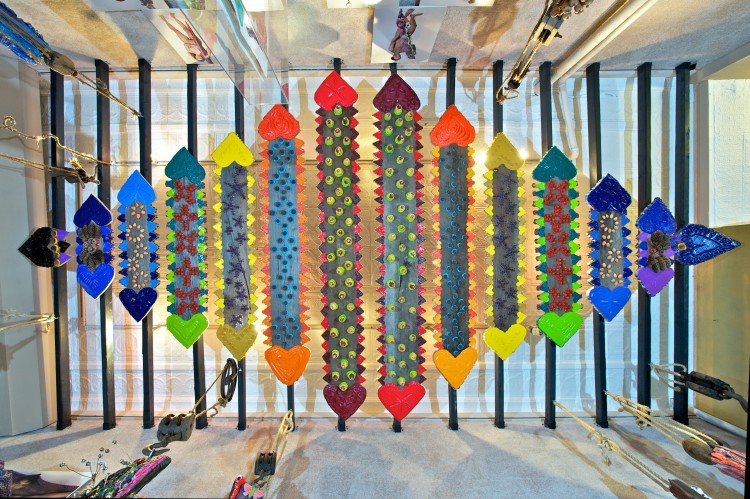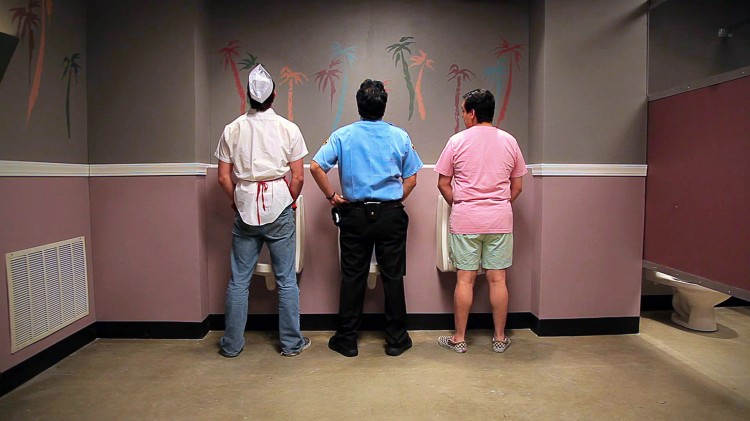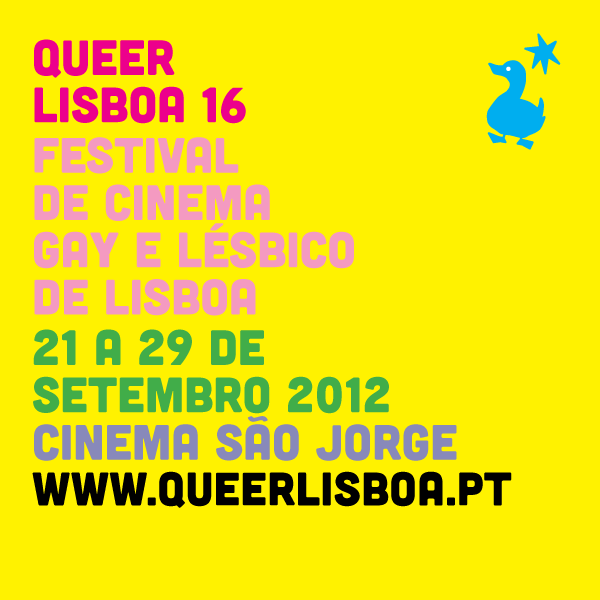A foot-high stack of papers sat on Ms. Pomerantz’s dining room table. “I pulled these out of a drawer for you,” she said, walking me over to them. They were the typed minutes of every Buddy team meeting she had ever attended. The Buddy program paired clients of the Gay Men’s Health Crisis with individuals who volunteered to help take care of them when scant other support network existed. I recently visited Ms. Leslie Fay Pomerantz in her Upper West Side apartment to discuss her experience with the Buddy program and GMHC. Ms. Pomerantz was honored in 2010 for twenty-five years of volunteer service. In addition to holding the distinction of longest serving volunteer, she was one of the first women to join the Buddy program. A few years into volunteering Ms. Pomerantz became the president of Team #2, which served clients on the Upper West Side. The stack of notes started in 2006, when the Buddy program ended. I leafed through the loose sheets, watching subsequently older generations of computer printing turn to electric typewriter. As I got closer to the bottom of the stack it dawned on me that this was an unbroken documentation of the AIDS crisis going back almost thirty years. Notes from the meetings in the early eighties were exceedingly grim; volunteers paraphrased the rapidly declining health of the men they struggled to care for. I looked at Ms. Pomerantz, who recommended we sit down and talk in her living room.
Do you have a lot of other papers from the early meetings?
Oh I probably have. The one’s I showed you and other’s I’ve kept.
Did you type these?
No, one of the team members took all the information down.
Can you talk about early Buddy meetings?
They were very emotional.
How many people were typically in a meeting?
Maybe 12 or 14. We’d have it here, and we’d talk about our clients. And we’d all help them by telling them things it would be good for them to do. People today just don’t know what it was like. Some of the Buddies got sick.
In the beginning a lot of the hospitals were apprehensive about treating people because no one knew how AIDS was spread, was your own health something you worried about?
Yes. People thought I was crazy. I didn’t dare tell my parents.
They never knew you were a volunteer?
No. And many people had trouble going into hospitals. I remember taking Emilio’s keys so they couldn’t send them home, and then he’d die. I remember going home with his key. And I went back and visited all the time. A lot of people didn’t have anybody. A lot of people’s families disowned them. Some of them disowned them when they found out they were gay. It was something I never understood. I’m a parent, I have two sons. I couldn’t see myself…I could get mad at them, fight with them…but leave them? Never.
Were you the only woman involved in GMHC at the time you started?
At that training, I was. And people said things that I didn’t understand.
For instance?
Talking to themselves, out loud, being funny. I didn’t understand. I would now, but I didn’t then. I went to training for two weeks in a row.
What exactly was the training?
I don’t remember those first trainings. But it’s changed. It was very different then than it is now.
GMHC was different?
No, what I mean is, people were very sick. If you were assigned a client and you had him for three months that was considered a very long time. There were no treatments. Sometimes you never even got the client. You were given the phone number and you called and you couldn’t find them. And then you learned that he had died.
Do you remember your first client?
Emilio. He lived near me. I had so many clients at first. I’d have to go through my papers.
Were the early clients all different ages?
Years ago, yes, they were all different ages. It took a long while, when they found out about AIDS, to understand it.
How long did you work with Emilio?
Not that long. You didn’t work with anybody that long. Because they died. I think three months. A little less.
Do you remember how you first heard about GMHC?
I think I read about it in the papers. I probably have it somewhere. There were two clients that were interviewed in the papers. And we were on 18th Street. I remember when I got there, Gay Men’s Health Crisis. I couldn’t believe it when I came in, there was a little desk with someone behind it, and he told me to go upstairs, turn to the left, and I was so surprised. I thought volunteers were women! But at the end of the two weeks everybody came up to me to thank me for being there. And I’m the only one still there!
Can you think of any stories that stand out from your early days as a volunteer?
Oh I’m sure. It was terrible before there were treatments. And people were not treated well in the hospitals.
I read you were known for something called the Leslie maneuver?
Yes! Where’d you find out about that?
I read about it on the GMHC website. My understanding is that you would not give the hospitals keys to the client’s apartment to keep them from being sent home without being cared for.
Yes, because that’s what they were doing. They were trying to send them home too quickly. So I took their keys.
Did you spend a lot of time in the hospitals with clients? Did you visit clients in their homes and in hospitals?
With Emilio, for instance, he lived nearby—they would give you people who lived nearby when they could. That was before God’s Love [God’s Love We Deliver], I used to go every day, I’d pick him up something to eat and bring it to him. Because he couldn’t do it himself. So, I did a number of things for him. They don’t have a Buddy Program anymore, but no one would need the things now that we did in the beginning. You literally took care of them. A lot of people didn’t have anybody. A lot of families disowned them. So a lot of people didn’t have anybody to help them when I started. I don’t even think many of today’s clients know things like that.
I’m very curious about, with the length of time you’ve volunteered, what kinds of changes you have seen in the organization; for instance in the way people’s attitudes have changed as treatments have improved, and as we have come to better understand AIDS. Do you feel there’s the same sense of urgency?
That’s not there anymore. And we also don’t have a Buddy program anymore. We lost funding and because you don’t need to do today what you did then. Today people have so much going for them. And people don’t get as sick. As soon as they find out they go on medications. There were no medications back then. Penicillin. It’s completely changed. And sometimes I wonder, when I sit giving tickets out at the lunch room—do they know what it was like? You can’t tell that anybody has AIDS, you don’t see it. But what you saw before, it was horrible. People could barely walk, AIDS had so many other complications. There were so many things that I can’t even remember.
Is there a way for younger people to get a sense of what it was like then?
Probably not. It’s totally different now. When I sit at the lunch desk, everyone looks healthy, everyone looks fine. But what you saw when I started…was awful. Do you have any memory?
I’m too young to remember, I’m 25.
So you don’t have any memory. Oh god what you saw was awful. People lost so much weight. There were so many problems people had, in the hands, in their legs, in their feet. It stopped them from being able to do things. It was a whole different story. And there was nothing to give them at first except penicillin. I saw things that, I remember saying to someone, that I never ever want to see again as long as I live. But I was glad that I was there to help those people. I don’t even know if some of the clients know what it was like before. I read something in the paper, I think it was the Daily News, and I found out there was a volunteer program.
This was in 1985?
Yes and if I remember correctly, GMHC was three years old when I started. But it was nothing like it is today. You spent so much of your time going to memorials. Always going to memorials. Many of the people that worked at GMHC died. Today you never hear of a death, thank heavens. And people don’t walk the way they did. In fact, sometimes when I sit at the luncheon desk I wonder, do these people know what it was like?
That’s why it’s so important to keep the stories alive, for people who have no direct connection that time, it’s a very important connection to me.
For me too. I still go to GMHC once a week, every Thursday, and I sit at the desk and hand out tickets. Someone said, what do you like about that? I said “Oh, the compliments I get.”
Did you personally know anyone affected by AIDS before you started volunteering?
Yes, a number of people. Died. And then of course they didn’t die, once they got medication. So I probably still know people with it that are taking medication. And I volunteer. I mean, after they stopped the Buddy Program Jeff Rindler, do you know who Jeff Rindler is?
No.
He didn’t want me leaving the agency. So he suggested that I come on Thursdays and sit in front of the dining room lunch dining room and put people’s IDs in the computer and give them a ticket. And I remember saying “Jeff, that’s not what I do, I like working with people!” And he said, well try it. Now I’ve been doing it for about six years! I’m there every Thursday. And I see about three hundred people for lunch. I’m glad, because I didn’t want to leave GMHC anyway, I’ve been there so long. Most of my friends are from GMHC.
Did you notice the attitudes of the volunteers at GMHC change as AIDS treatments got better? More positivity? More hope?
It took a while. I’m the longest person there, I was told. I didn’t know that, but I was. In fact, I have pictures in my bedroom, like this, and a number of the people in the pictures died. He died. We were very good friends. We became very close. Nigel. He’s from New Zealand. He was from New Zealand. He lived here and we became friends. And then he got sick and he had to move back to New Zealand because he didn’t have insurance here.
What year was that, do you remember?
No. I could look it up. But I remember going to New Zealand, we went to both islands. He had never been to the second island. And then, he was coming here a couple years later, and I was meeting him downtown because he was going to come up and stay here. And I got a phone call, he called me and said “I don’t know how to tell you this, but I can’t come to New York.” He had a brain tumor. He said would you come, please come. So I went to visit him. And he died.
While you were there?
Yes. In fact, he asked me to sleep in his bed with him. He woke up, I think it was around six in the morning, he woke me up, he had his eyes wide open but he wasn’t seeing anything. He was lifting his legs all the way up and he would throw them out over and over and over again. I remember getting up and calling his doctor, and that was that. He eventually died that day. He had a close friend, Larry. So we were staying at Larry’s house.
How old was he when he died?
Probably his early thirties. He was charming. Everybody liked him. So he stayed with me. I have three bedrooms. When my older boy moved out I turned his room into a guest room, so Nigel stayed there when he stayed with me. I haven’t a guest in there in I don’t know how long.
How did you meet Nigel?
Through GMHC. He was a volunteer. He was a cook, so he was doing things like catering to people on his own. … Funny, of all the men in my life, and I’ve had a lot of men in my life, Nigel is the one that I think of the most. I’m going to get a cigarette. Do you smoke?
I would have a cigarette with you, thank you. And thank you for agreeing to meet today. It’s been a pleasure speaking with you.
—
Many thanks also to David Pais at the Gay Men’s Health Crisis for connecting me with Ms. Pomerantz.
